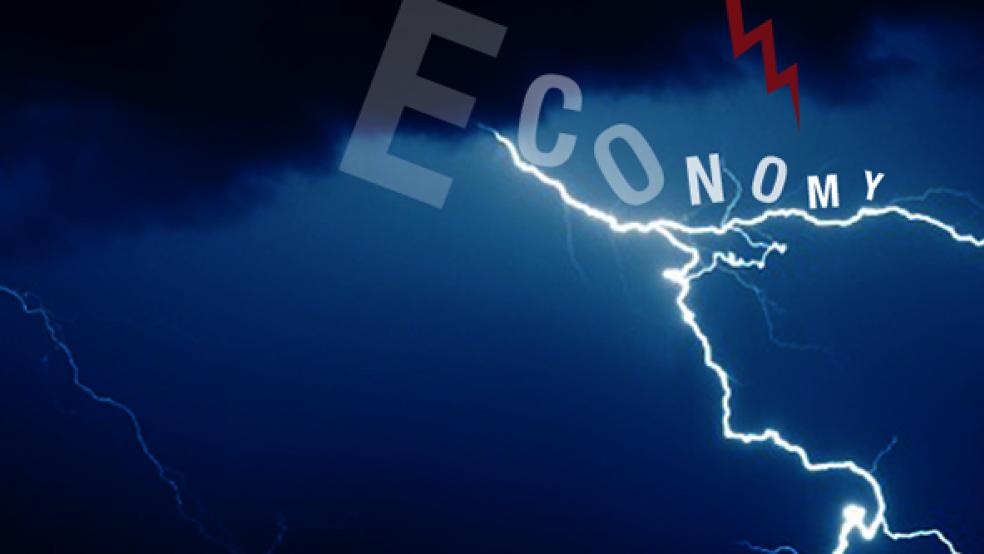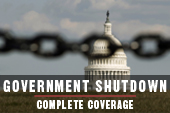Though Congress finally put an end to the 16-day government shutdown late Wednesday night, economists say the standoff has drained billions of dollars from the U.S. economy, with effects extending across a number of industries beyond the federal government itself.
The shutdown forced hundreds of thousands of federal employees and contractors out of work, put government contracts on hold, shuttered national parks and museums and left businesses with fewer customers and lower sales. It’s too early to know the final cost of those and other effects, but analysts at IHS Global Insight said the hit to gross domestic product from lost government services alone totals $3.1 billion.
“There will also be some impact from lost private-sector jobs tied to the shutdown, as well as a loss of consumer and business confidence resulting from the debt-ceiling showdown,” IHS economists wrote in an analysis released to the media. “The exact impact on the rest of the economy will be hard to measure until delayed economic data are released.”
Even before that data becomes available, analysts at Standard & Poor’s estimated that the shutdown cost $24 billion (or $1.5 billion a day) and slowed the country’s economic growth rate by an annualized 0.6 percent for the current quarter.
“The bottom line is the government shutdown has hurt the U.S. economy,” S&P said in a statement. “In September, we expected 3 percent annualized growth in the fourth quarter because we thought politicians would have learned from 2011 and taken steps to avoid things like a government shutdown and the possibility of a sovereign default. Since our forecast didn’t hold, we now have to lower our fourth-quarter growth estimate to closer to 2 percent.”
The Washington, D.C. region was hit especially hard. Some local businesses took a major blow since there were fewer tourists and workers shopping and dining out during the shutdown. Pete’s Diner on Capitol Hill, a favorite of many members of Congress including House Speaker John Boehner, lost about 80 percent of its usual business, according to MSN. Businesses like that diner, located in communities hit hard by the federal government shutdown, will never be able to make that money back. “While the federal workers will receive their back pay, the missed coffee, burgers and cocktails will not be repurchased upon their return,” Jack Ablin, chief investment officer at BMO Private Bank, said in a statement.
But the shutdown’s impact was felt well beyond the nation’s capital. According to a new survey by International Council of Shopping Centers and Goldman Sachs, about 40 percent of Americans say they had curbed spending as a result of the shutdown. The survey found that low-income consumers were especially likely to say the shutdown affected their behavior. Nearly half of those earning $35,000 or less said they scaled back their spending, versus about a third of respondents making $100,000 or more.
And thanks to congressional gridlock, consumer confidence is at its lowest point in nearly two years according to Bloomberg’s monthly consumer confidence index.
“As we head into the holiday shopping season, retailers and consumers need stability and certainty from policymakers in Washington and assurance that the economy will not implode due to their actions or more important, lack thereof. This new norm of legislating from crisis to crisis is no way to govern,” Matthew Shay, the president and CEO of the National Retail Federation, said in a statement. “When consumers cut back their spending, it threatens jobs in every industry. If it’s bad for retail, it’s bad for the economy, and ultimately the biggest losers are American taxpayers.”
Some larger companies have already cited the standoff as a reason for scaling back their earnings forecasts. Stanley Black & Decker cut its fiscal year outlook on Wednesday morning, just hours before a deal was reached in the Senate. It said that growth would be weaker in part due to “macro issues affecting emerging markets and the U.S. government budget impasse.”
Similarly, microchip designer Linear Technology revised its outlook this week as prospects in Washington looked grim. “Business in the United States may be impacted by the current budgeting stalemate at the federal government level,” CEO Lothar Maier said in a release. “Accordingly, we are forecasting revenue for our second quarter to be flat to down 4 percent from the first quarter of fiscal 2014.”
If the shutdown made conditions less certain for businesses, it also made it impossible for the officials at the Federal Reserve to monitor key economic data as they look to deicde when to pull back on their $85 billion a month in bond purchases. “The data available in September were inconclusive, and since then, incoming information has been silenced with the federal government shutdown,” Charles Evans, president of the Federal Reserve Bank of Chicago, said in a speech Thursday. Evans reportedly added that the Fed would likely need “a couple of meetings” to gauge the effects of the shutdown.
Analysts are worried that the damage to consumer and business confidence won’t heal right away, in part because Wednesday night’s eleventh hour deal sets up the possibility of more fiscal policy gridlock early next year. The agreement only extended federal funding until Jan. 15 and lifted the debt limit until Feb. 7.
"We have crisis after crisis after crisis and it has a corrosive impact on the economy," Greg Valliere, an analyst with Potomac Research Group, told Reuters. "If you're a business, how do you make plans in this environment?"






